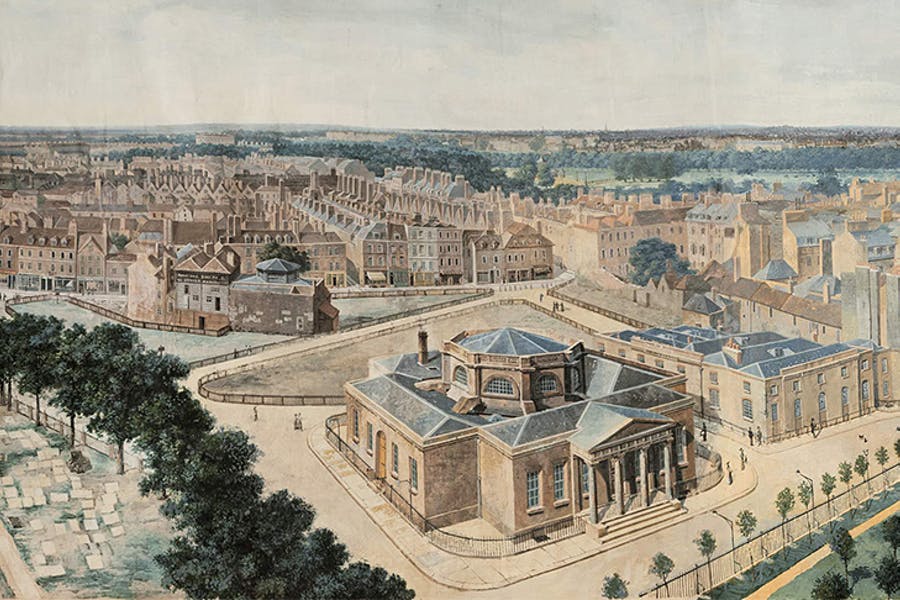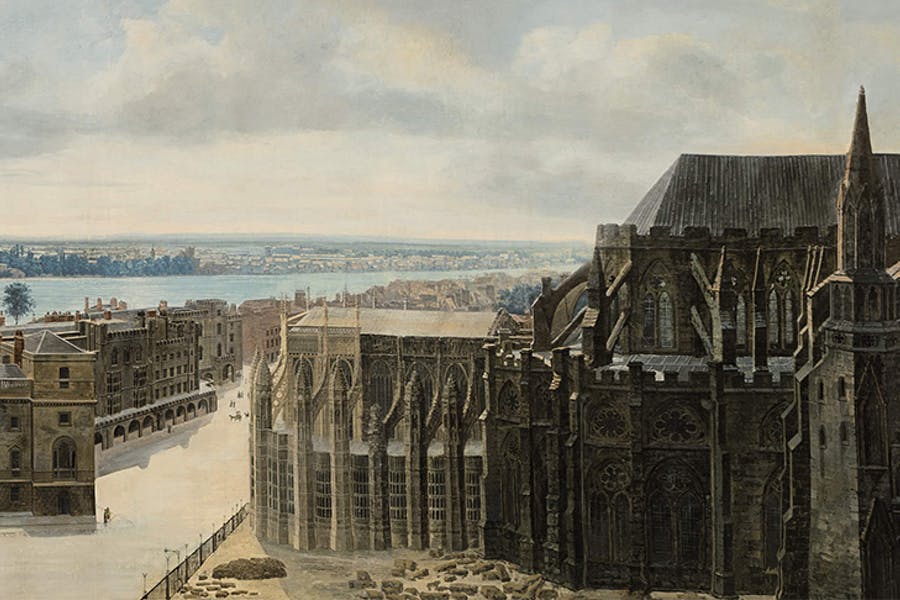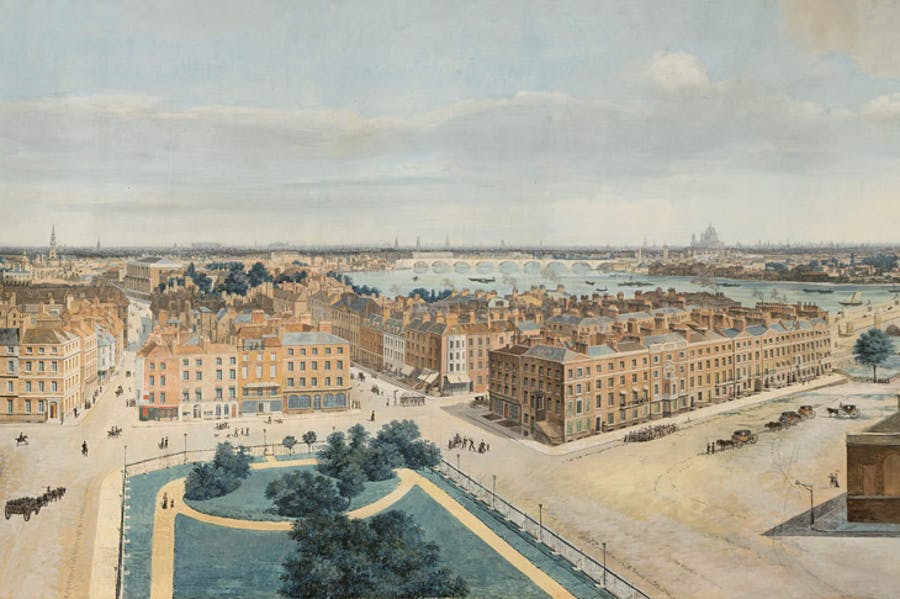
For the general reader of poetry—one not restricted by or reduced to historical principles
only—the very best poetry of John Keats (1795-1821) does not proclaim that its author
is a
London poet. That is, Keats’s larger poetic prowess is not normally associated with
London in
a sense that significantly defines and then limits his identity or, to put it in terms
Keats
himself might use, the qualities of an enduring poetical character. Not all readers
will say,
John Keats, the London poet . . .
in the same way, for example, we encounter
associations of William Wordsworth with the
Lake District; or, even as a more contemporary example, the rather odd way Phillip
Larkin is
associated with Hull. Keats’s larger cultural greatness and reputation as a poet has
not, it
seems, been so much defined by place, despite reviewers who, just before he wrote
his best
poetry, gleefully maligned Keats as a poet of the Cockney School of Poetry,
sitting at
the foot of poet, critic, and celebrity journalist, the very Londony Leigh Hunt.
Yet, no doubt, Keats was very much a London lad.
That Cockney
place-naming of Keats was motivated more by
partisan politics and class than by poetry and place. (The term Cockney
in Keats’s day
pejoratively points as much to Londoners in general than, as it does today, to east
Londoners
only.) Again, here Keats sits as a mere wannabe stripling—effeminate, misguided, and
a mere
Huntian sycophant; better that he stick to a medical career,
where he at least might have some use to the world. But, truth be known, Keats’s earlier
poetry (up to and including his 1818 Endymion) is indeed tempered by largely
ineffectual suburban sentiments of sociability that we associate with Hunt and a certain
cultured Regency London temperament. But well before such nasty reviews appear in
August 1818,
Keats self-consciously attempts to break away from association with Hunt—and therefore
London—and he begins to do so fairly quickly after initial mutual infatuations in
late 1816
(Keats and Hunt are introduced in October of that year). By May 1817, Keats can write
to
historical painter Benjamin Robert Haydon (a
competitor with Hunt for Keats’s allegiance) that Hunt’s delusions about his own poetic
greatness are lamentable. Haydon is quite passionate that Keats move from Hunt’s sway
in order
that Keats might pursue his own path to poetic greatness, which Haydon fully believes
is
Keats’s fate. Sadly, Haydon has a few delusions about his own
greatness. And Haydon is not the only one who pushes Keats toward finding his own poetic
voice—other friends, like John Hamilton
Reynolds, Richard Woodhouse, John Taylor, Charles Brown, and Benjamin Bailey, in
their own way rouse Keats to follow his own path and a larger destiny. Most of Keats’s
earlier
reviewers—even those favorable—lament Keats’s poetical affinities to Hunt.


When we physically map out Keats’s life, we find that he is equally a part of London’s
ever-connecting margins and its inner city. He is born in
Moorgate, schools in Enfield, lives with his grandmother in Edmonton,
lives in Cheapside, does his medical
training at Guy’s Hospital in central London, makes a remarkable number of his literary
connections among liberal-radical London circles of his day, and is betrothed to Miss Fanny Brawne, who is born in Hampstead and lives
mainly in Kentish Town. As an adult, he lives quite a while in Hampstead, which still
allows
him get to central London, where he can get to lectures, attend art exhibitions, take
countless walks; where he shops, dines, banks, drinks, watches plays, goes to the
opera, plays
cards, and buys books; where he meets with and bumps into friends—and on one occasion,
an old
romance, hoping that the chance meeting might end with a little
kiss or two (it doesn’t). In one very short letter written in December 1819, he says
he has
an appointment in the City of an undeferrable nature,
that a friend has some
business at Guildhall,
and that he has a poem hung up for the Prize in the Lecture
Room of the Surrey Institution.
The three volumes of poetry he produces during his
lifetime—in 1817, 1818, and 1820—are all published in London.
And how vibrant, diverse, and evolving is London in Keats’s era? Over Keats’s lifetime, Greater London grew by almost half a million people, from about one million to 1.5 million, making it the largest city in Europe—and in just few years after Keats’s death, the largest city in the world.
And it is on a bitter night in February 1820, after a day in the
city, that Keats coaches home at eleven o’clock, having travelled in the open, which
is the
chaper fare. Keats’s very close friend Charles
Brown records a fevered Keats arriving and sending him to bed: On entering the
cold sheets, and before his head was on the pillow, he [Keats] slightly coughed, and
I heard
him say, ‘That is blood from my mouth [. . .] I know the colour of that blood;—it
is
arterial blood; I cannot be deceived in that colour;—that drop of blood is my
death-warrant;—I must die’.
Though Brown’s rendition of Keats’s words is a little stagy,
Keats no doubt recognized that the colour of the blood meant that its origins were
his
lungs—and not, for example, his throat alone.
The death-warrant
was, sadly, right. Keats spends much of the last year of his life
worrying about and then enduring the almost always unstoppable illness of consumption
(tuberculosis)—the highly contagious wasting
disease that slowly, agonizingly, consumes
those infected with it. He had nursed both his mother and his youngest brother though
consumption until their deaths by it, and, as someone with significant training, he had a good idea of what was coming. His two other worries
during his last year are his passionate, brooding, and uneven love for Fanny Brawne, and his constant anxieties over money. Neither are
resolved—the first ends sadly, the second badly. Almost until the end, Keats cannot
shake away
his overwrought feelings for Fanny. As for money anxieties, we
have to remember: Keats never holds a job in his adult life, and, in order to pursue
his
poetic ambitions, he depends upon the trickle of inherited funds that are unpredictably
doled
out by the family trustee, Richard Abbey (Abbey
and Keats share an unpleasant mistrust of each other). Keats lives his life as a poet
almost
exclusively on credit, which is sorely stretched by 1819. He doesn’t live long enough
to
discover that a separate and relatively significant inheritance established by his
maternal
grandfather is in fact waiting for him via the courts, accumulating interest.


As a remedy for his illness, Keats takes well-intentioned medical advice to head for
warmer
weather: The Doctor tells me there are no dangerous Symptoms about me and that quietness of
mind and fine weather will restore me
(to his sister, Fanny, 19 February). Medical
diagnosis he receives well into his illness suggest that his symptoms are related
to
depression and a nervous disposition—and even to poetic anxieties. Shortly after his
February
hemorrhage, he writes to sister again, I am recommended not even to read poetry much less
write it
; and some weeks later he writes to her, The Doctor assures me there is
nothing the matter with me except nervous irritability and a general weakness of the
whole
system which has proceeded from my anxiety of mind of late years and the too great
excitement of poetry
(21 April). It is difficult to comment on such unsound medical
opinion, but what is worth noting, and what is remarkable, is how Keats somehow communicated
that poetry, more than anything else, occupied the very depths of his feelings and
thoughts,
his body and his mind.
And so, leaving England in September 1820, he spends the final four or so months of his life in Italy. The climate has no effect, and after enduring a horrible decline, witnessed and recorded graphically by his companion, the young painter Joseph Severn, Keats is buried in Rome.
Keats wants to be buried with the simple and now famous and self-chosen epitaph, Here
lies One Whose Name was writ in Water.
Keats’s friends, however, decide to add to
the inscription, while also dramatizing Keats’s death and causes for it: ‘This Grave /
contains all that was Mortal, / of a / YOUNG ENGLISH POET, / Who, / on his Death
Bed, / in the Bitterness of his Heart, / at the Malicious Power of his Enemies, /
Desired /
these Words to be engraven on his Tomb Stone /
Here lies One Whose Name was writ in Water. / Feb 24th 1821.
’ Keats is twenty-five
years old. His name is not recorded on the tombstone, nor is
London, his birthplace and home. And thus the image of Keats as the embittered, victimized,
sensitive outsider begins, when in fact he was quite the opposite: an active, engaged,
connected Londoner, supported and respected by numerous friends in
a sprawling network, mainly set off by meeting Hunt. Moreover, he was at moments
confident in the survival of his poetic worth beyond being a mere Regency London poet:
writing
mid-October 1818 to brother George and sister-in-law Georgiana, and with the reviewers
in
mind, he makes a remarkable pronouncement of both confidence and defiance: I think I shall
be among the English poets after my death.
Keats is thinking Chaucer, Milton,
Shakespeare, Wordsworth . . .
With 159 self-contained yet overlapping micro-chapters, and using geo-spacial backdrops for every entry, Mapping Keats’s Progress chronologically marks selected moments, places, and addresses related to Keats’s life and poetry, most of which are in London. The aim is to critically assess what is often considered most remarkable about Keats: his growth as a poet over not much more than three to four years. In adjoining maps and entries beyond London, we also follow him on trips to other places in England, such as the Isle of Wight, Margate, Canterbury, Oxford, as well as Scotland via the Lake District (on a walking tour), and, as mentioned, finally to Italy.
All these places, then, provide some material anchor to many of the significant and complex parts of Keats’s life and thought, and why we bother with Keats in the first place: that, in that final year of his writing, 1819 (and dipping back a bit into 1818), he began to compose remarkable poetry. Without what his final year of composition yields, Keats would be a minor figure, though part of an interesting London circle, rather than becoming the centre of a much larger one. The vast majority of Keats’s poetry up until that final year of writing is, as suggested, not very good, and significant only inasmuch as it is written by the John Keats of 1819. That nature of his poetry’s badness is important inasmuch as it tells us (and Keats, too) what he needs to get right—or more correctly, just leave behind, and part of what he has to leave behind is in fact tied to influences and a style that can be identified with London. In his own terms, his most significant poem before 1819, Endymion, represents, at best, a test or a trial. He could hardly wait to complete it and forget it—to leave behind, in his own terms, its mawkishness and immaturity. Keats was absolutely aware that the stuff of his early poetry was in fact that—well, stuffing, to be exact. How, or where, was Keats to find the material to become that greater poet he so deliberately strove to become?
This question takes us to other intriguing one that lurks behind the reason for this site, and in this way the maps are an excuse to variously answer the conflating questions that prop up Keats’s importance: How, so rapidly, did Keats become a great poet—and what is the nature of that greatness? What are the connecting factors? So, although MKP is in part interested in the where-and-when of Keats’s life, it is an attempt to connect, as it were, the scattered dots of that remarkable poetic development, particularly between 1816-1819, when he becomes a poet against but within the backdrop of his full, complex life in London.


And a complicating factor: we also need to recall that Keats often physically—and purposefully—escaped London in order to write: to the Isle of Wight, to Margate, to Winchester, to Oxford, to Burford Bridge, to northern England and Scotland. And we might even suggest that Hampstead of the early nineteenth century was itself a slight escape from London proper. From its prospect, you could look down upon the city and, at once, be both a part of and apart from what London in its growing complexity represented.
So, a kind of paradox remains: Keats’s best poetry attempts to break out of and transcend that particular London world into which he can nevertheless be so obviously placed, and in which he just as obviously places himself via his first collection, the 1817 volume. We could even, a little stridently (and nodding to current materialist critical trends), say that his early work on one level fully acts out contemporary politics and Keats’s political sympathies—after all, he announces in that first volume that hyper-political Hunt is his model and mentor. But Keats develops into a Regency London poet whose greatness depends on him not being a Regency London poet, and he becomes ever-conscious of finding subjects—and a voice and forms—that de-limit his place, time, and message—or ideology. His greatness, his lasting power, then, depends upon his poetry’s ability to deliberately speak in and to contexts well beyond his own London world.
Art can never, of course, escape its originating contexts—after all, it has to be created somewhere at some time by someone; but great art often has qualities that moves us those contexts and empowers us imagine something bigger or, as Keats would say, embrace some principle of beauty that we can bring into contexts of our imaginative choosing. That Keats’s best work seems pointed toward or invokes the future now makes more sense: it is aimed toward future contexts that do not yet exist, and Keats was fully aware of this.
[on pages vii-ix of the original text]
KNOWING within myself the manner in which this Poem has been produced, it is not without a feeling of regret that I make it public.
What manner I mean, will be quite clear to the reader, who must soon perceive great inexperience, immaturity, and every error denoting a feverish attempt, rather than a deed accomplished. The two first books, and indeed the two last, I feel sensible are not of such completion as to warrant their passing the press; nor should they if I thought a year’s castigation would do them any good;—it will not: the foundations are too sandy. It is just that this youngster should die away: a sad thought for me, if I had not some hope that while it is dwindling I may be plotting, and fitting myself for verses fit to live.
This may be speaking too presumptuously, and may deserve a punishment: but no feeling man will be forward to inflict it: he will leave me alone, with the conviction that there is not fiercer hell than the failure in a great object. This is not written with the least atom of purpose to forestall criticisms of course, but from the desire I have to conciliate men who are competent to look, and who do look with a zealous eye, to the honour of English literature.
The imagination of a boy is healthy, and the mature imagination of a man is healthy; but there is a space of life between, in which the soul is in a ferment, the character undecided, the way of life uncertain, the ambition thick-sighted: thence proceeds mawkishness, and all the thousand bitters which those men I speak of must necessarily taste in going over the following pages.
I hope I have not in too late a day touched the beautiful mythology of Greece and dulled its brightness: for I wish to try once more, before I bid it farewel [sic].
Teignmouth,
April 10, 1818.
× Cite this page:
Blank, G. Kim. “Keats: A London Lad Thinking (and then Existing) Beyond London.” Mapping Keats’s Progress: A Critical Chronology. Edition 3.27 , University of Victoria, 19 August 2024. https://johnkeats.uvic.ca/keatsLondon.html.
G. Kim Blank, “Keats: A London Lad Thinking (and then Existing) Beyond London,” Mapping Keats’s Progress: A Critical Chronology, Edition 3.27 , last modified 19th August 2024. https://johnkeats.uvic.ca/keatsLondon.html.
Blank, G. Kim. “Keats: A London Lad Thinking (and then Existing) Beyond London.” Mapping Keats’s Progress: A Critical Chronology, Edition 3.27 , last modified 19th August 2024. https://johnkeats.uvic.ca/keatsLondon.html.